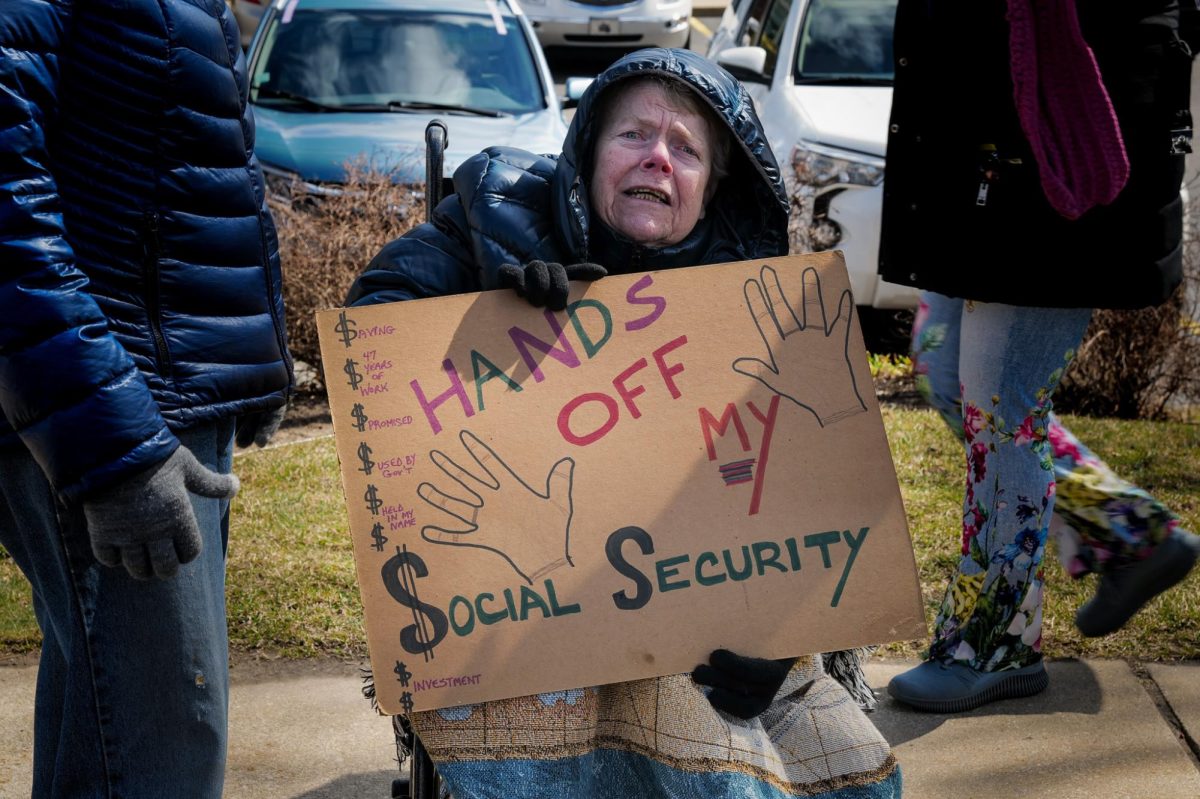One of the craziest seasons of March Madness in the recent decades leaves UCONN at the top of the throne
Credit: NPR News
UCONN men’s basketball team proudly holding up the trophy after shocking the world. On April 3rd in Houston, at the NRG stadium UCONN defeated San Diego State, completing their miracle run in the yearly “March Madness” tournament.
May 11, 2023
March Madness, the NCAA Division I basketball tournament, commenced on Mar. 14 and it ended with the final game on Apr. 3, but it’s what happened in between these two dates that has left many American citizens scrambling for sanity.
The first upset occurred when 16 seed Fairleigh Dickinson University (FDU) escaped No. 1 seed University of Purdue’s grasp with a 63-58 nailbiter. This is what started the insanity of the 2023 men’s March Madness tournament.
Another key factor in the insanity of the tournament: brackets.
Participants of March Madness all fill out brackets through ESPN, CBS, NCAA, Yahoo, etc. Filling out a bracket means you guess the winner for all 67 games, and if that isn’t hard enough, you must guess the exact score of the final game. In the 84 years March Madness has been going on, nobody has ever filled out the perfect bracket. The longest a bracket has been perfect was 49 games, filled out in 2019.
Guessing the winner is often the most important part, but no one has had a bracket that lasted long enough to do so.
“Unless you picked Connecticut to win, it went horrible,” said Norrix athletic director Andrew Laboe.
The University of Connecticut (UCONN) came in with decent odds to win it all, yet only 1.89% of CBS “March Madness” participants chose them to be crowned national champions. The top dogs coming into the tournament were The University of Houston and The University of Alabama, but neither of these teams made it into the final round of the tournament, the Final Four.
This is crazy because on average around 2/4 of the No. 1 seeds make it to the final four each year: this year 0/4 No.1 seeds made it.
Laboe filled out multiple brackets, as it boosted his chance of winning, but like many participants he had a far from perfect bracket. The longest streak this year ended at the 25th game and to nobody’s surprise, this was when FDU clashed with Purdue.
Realistically, March Madness brackets are a huge waste of time, as participants have a 1 in 9.2 quintillion chance of winning. Thankfully, for the NCAA and businesses nationwide, this is America, and even with the crazy odds, citizens will still empty their pockets for the tournament.
Over 40 million people combine to fill out over 70 million brackets, with each bracket costing around $30 dollars. This racks up to about $9 billion in bets. It’s not just the brackets bringing in the money though, beer companies nationwide sell 4 million more barrels of beer during the month of March, and pizza sales rise around 20% too.
Moving away from pizza, the name “March Madness” originated back in 1908 when Illinois hosted a statewide tournament, and it’s stuck since. Laboe explains his reasoning for why this tournament is full of such absurdity.
“I think that college basketball has way more parody than ever before because a lot of the best players out of high school go up to college for a season to play their year out of high school there before they go pro,” said Laboe. “A lot of them are just doing a year and leaving. So Kentucky 8-9 years ago when they had Anthony Davis, Michael Towns, Devin Booker and some others, they had that whole starting five who went on to be NBA all stars.”
So the high school studs, typical Americans, greedy businesses and some crazy upsets all combine to create what we call “March Madness.”This year UCONN managed to weave through all of the obstacles and doubters, but this year’s results show that even Western Michigan University – who are scraping the bottom of the bucket in their division – could go on and shock the nation next year.












